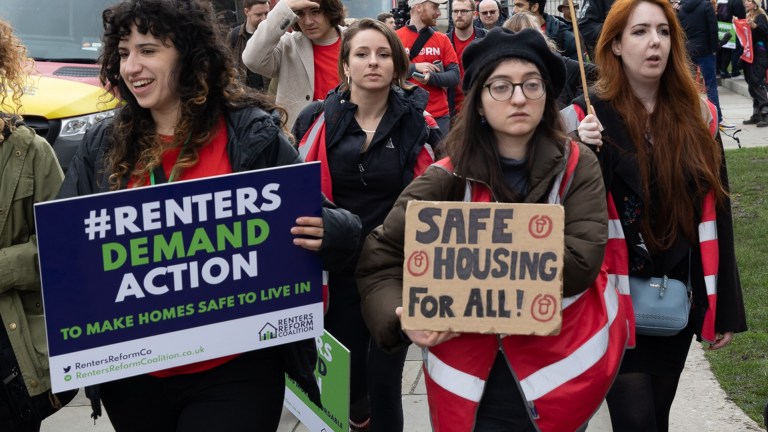Are tenancy agreements legally binding?
Tenancy agreements are legally binding documents. Once signed by both parties, the tenant and landlord are committed to what the agreement says. Breaking these terms can have legal consequences, such as eviction for tenants or fines for landlords. It’s crucial to read and understand everything in the agreement before signing.
Types of tenancy agreements
Different types of tenancy agreements cater to different renting arrangements. In England, the most common are:
Fixed term tenancy agreements
A fixed term tenancy agreement lasts for a set period, usually six months or a year. During this time, neither the tenant nor the landlord can end the agreement without a penalty unless one of them breaks the contract. This type of agreement offers stability and predictability for both sides.
Fixed term agreements are great for tenants who want to stay in a home for a longer time without worrying about monthly renewals. They also help landlords plan ahead, knowing the property will be rented for a certain period.
Periodic tenancy agreements
Periodic ‘rolling’ tenancy agreements don’t have a fixed end date and continue until either the tenant or the landlord gives notice to end it. These agreements are often used after a fixed term tenancy ends, automatically renewing each month or week. They offer flexibility but can be less stable than fixed term agreements.
Periodic tenancies are helpful for tenants who need flexibility, like those who might move for work or are unsure about their long-term plans. However, this flexibility can also cause problems if the landlord decides to end the tenancy with short notice.
Joint tenancy agreements
A joint tenancy agreement is for multiple tenants sharing the same rental property under one contract. All tenants have equal rights and responsibilities. If one tenant doesn’t pay rent or breaks the agreement, the other tenants can be held responsible. Joint tenancies are common among friends or family members renting together.
Joint tenancy agreements can create a sense of shared responsibility and community among tenants. However it’s important for everyone to understand that they are all liable for the rent and any damages, so choosing reliable housemates is essential.
Unfair terms in tenancy agreements
Tenancy agreements might sometimes have terms that are unfair or even illegal. Unfair terms are those that give the landlord too much power and put the tenant at a disadvantage. This could include: excessive penalties for late rent payments; unreasonable restrictions on guests or pets; or mandatory services which aren’t required by law but that the tenant must pay for.
Tenants should carefully read their agreements and seek legal advice if they think any terms are unfair – the country is facing a housing crisis and it can be tempting to take the first home you find, even if there are issues with the terms. The Unfair Terms in Consumer Contracts Regulations 1999 protects tenants from unreasonable conditions, making sure contracts are clear and balanced.
“The important thing with any tenancy agreement is to make sure it includes everything that you and the landlord are expected to do,” a spokesperson for the National Residential Landlords Association told the Big Issue.
“Key matters like the rental amount and the payment date are crucial but details about how any deposit will be protected, when the landlord can access the property, whether pets are allowed and who pays the utility bills are all important too.
“For landlords, we would always recommend using a well drafted tenancy agreement that’s written in plain English. This helps to ensure that the tenancy clauses are fair and enforceable, as well as helping your tenants understand what is expected of them while renting their home.”
Types of tenancy
Different types of tenancies exist, each with its own set of rules and protections.
Assured shorthold tenancies
Assured shorthold tenancies are the most common type of tenancy agreement in England – known now as occupation contracts in Wales. They usually last for six months or a year but can also be periodic. Assured shorthold tenancies let landlords take back the property at the end of the term if they give the right notice. Tenants can live in the property without being disturbed and can only be evicted through a court order.
Assured shorthold tenancies provide a good balance of protection for both landlords and tenants. They offer tenants security during the fixed term and give landlords a clear process for getting their property back if needed.
Assured tenancies
Assured tenancies offer more security for tenants than ASTs. They usually have no fixed end date, and as long as the tenant abides by the terms of the agreement, they have the right to stay in the property indefinitely. Landlords can only evict tenants under specific circumstances, such as rent arrears or property damage.
Assured tenancies are less common but provide significant stability for tenants. They are typically used for social housing and offer robust protections against eviction, making them an attractive option for long-term renters.
Private residential tenancies replaced assured and short assured tenancies in Scotland.
Regulated tenancies
Regulated tenancies, also known as protected tenancies, are less common and typically apply to tenancies that began before January 15 1989. These tenancies provide significant security and control over rent increases. Tenants have the right to remain in the property unless the landlord can prove a valid reason for eviction.
Excluded tenancies or licences
Excluded tenancies or licences are often used in specific circumstances, such as lodgers renting a room in the landlord’s home. These agreements offer limited protection compared to other tenancy types. Landlords can evict tenants without a court order and usually need to provide only reasonable notice, which can be as short as one payment period.
In some cases, a landlord wants to sell without having to evict their tenant. The buyer would then assume responsibility for the tenancy, and the tenant would continue living there throughout – known as a sitting tenant or tenant-in-situ. The terms of your tenancy would stay the same and the new landlord can’t change them without following the right legal steps first.
Do you have a story to tell or opinions to share about this? Get in touch and tell us more. Big Issue exists to give homeless and marginalised people the opportunity to earn an income. To support our work buy a copy of the magazine or get the app from the App Store or Google Play.









